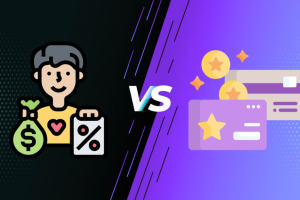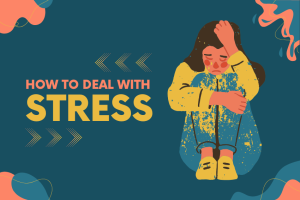Due to the official launching of the search engine, “Google,” in 1998, the internet search history and website media changed forever. The Google Company further introduced the Panda and Penguin algorithm in 2011 and 2012, respectively, and it revolutionized how data and websites are found and displayed by the search engine.
Before the early 2000s, we had websites where the content was published and displayed on the internet without focusing too much on the quality or guidelines on the desire and requirements of web browsing users. Thin content was the norm, and keywords were not a consideration.
As a result, many websites and web pages that were on top of the search result on the internet had poor quality data and a jumble of bulky and unwanted keywords, which weren’t very beneficial to the clients. It was also usually machine-readable oriented and seemed too stiff or nondescript when interpreted by a human user.
But after Google took control of the search algorithm and initiated optimization strategies to fetch only the quality content posting websites, web pages with thin content were pushed down. Websites that didn’t pay much attention to the details and value within their posts were filtered out and left behind in this process. And slowly, their low ranking made them invisible on the internet. They lost their traffic and online business marketing in this process. But what happened here? To understand the reason behind it, let us look at how Google’s presence brought modernization to the internet search engines.
How Google’s Algorithm Affects?
Google has implemented SERPs’ rules and policies, under which the search engine goes through and filters content from millions of websites to finally display the finest works and result pages. The search engine doesn’t target a single web page as many of us think; rather, it focuses and analyses the entire content. That means, whatever you create and display on your website, Google will go through everything, even the images, and evaluate if it is worth featuring on the search result for the web users.
So, if you aim to climb up the rank of organic search findings list and reach the top page of Google results, you will have to properly optimize your content and deploy strategic and good keywords. Try to create original and generic content that is both useful and satisfying to the consumers’ demands. The more you stay conscious of the users’ needs and create posts based on them, there’s higher the chance of Google catching up with you and featuring you on the search page.
Your website’s reliable external links, SEO tactics, detailed and informative content, proper usage of relevant keywords, and high-quality images make it a good web page for the people to visit it utilizing its information.
What does the term “thin content” mean?
The term thin content refers to a page that has little to no valuable information the users can rely on and is deemed as unfit website content for displaying on the internet. If an article of a web page has duplicated content, provides less material, and is suffocated with keywords, it is referred to as thin content, and Google deems its value as thin and very less for a user to invest their time in it. You may get penalized for creating thin content on your website.
Wouldn’t that be disappointing? When we browse on the internet and click on a title relevant to our searching purpose, we expect to see a detailed page with useful and valuable information we can utilize. The hypothetical article we’d referenced in the above paragraph is roughly what a typical thin page might look like. And Google works with the combinations of various algorithms to ensure that you don’t face such bland and little valued articles on the internet.
Types of thin content
There are thin contents unintentional from the web master’s side, but it damages their performance as Google is very strict against orphan pages and thin contents. So, you should do the best in your abilities to remove thin content from your website. Although they might help you reach a definite rank on the search results, such pages wouldn’t be useful for promoting your business and reaching the top.
Let us briefly look at some types of thin contents:
Duplicate contents:
Sites that reference similar keywords in all of their blog posts are often inundated with similar posts. They are marked as the same by the search engine and considered thin content.
Stuffed with too many ads:
Ads should always be secondary to a page’s content. If a website has too many ads that overshadow the content, it will be considered thin content by Google.
Doorway pages:
Often, websites have only targeted keywords and often have external links and reference sources that lack quality. Such websites are deemed as thin content pages.
Deficient in usefulness:
If a page’s subject matter is only targeting the keywords and lacking information and depth in its content, it comes under the thin content category.
Reasons why thin content hurts SEO and your website’s performance
Decrease in traffic
First of all, thin content lacks valuable information and causes a bad user experience on the internet. If any of your web pages have similar features, Google will take note of it and remove your page from the search results altogether. It will not only hurt your SEO but cause a massive downfall in your customer traffic that will ultimately give a bad rank to your web page.
Lack of backlinks for your website
We talk about things we like with other people, isn’t it? So a customer will only share your website’s link with someone else if they will come to find it good enough. With more backlinks created to your website, Google will consider your article valuable and rich in information and resources. But with thin content, there will be a reduced number of backlinks to your page, and it won’t take too long for Google to penalize your website for it. And it will hurt your SEO and online ranking.
Higher bounce rate
Like the imaginary website’s example that we had considered previously in this article, it will frustrate any user, and they will go back to the search page to find another link for getting their answers. It is called bounce-back on the webpage. If your web page has a high number of bounce backs, Google will immediately take note and penalize your post as thin content. It will only damage your market and thin out the traffic.
Penalty
Google penalizes the websites for displaying thin content and tricking the users with click baits. If a site contains affiliate and doorway pages, copied content, or cookie-cutter sites, it is considered to have little to no added value. And in such situations, Google will issue a penalty under the Webmaster Guidelines to its webmaster. It will put the website’s traffic and revenue at risk because it will be removed from the search results. You can reestablish your page only through fresh and good content with originality in place of the thin content areas.
Cannibalization
Cannibalization describes a phenomenon when the demand for a company’s initial products declines due to the introduction of a similar product or a new service. It causes a reduction in their revenue and rank and eventually causes a negative growth rate. Similarly, keyword cannibalization is very common in thin pages. If you continue to use the same keywords in all of your website articles, chances are you will confuse the Google search algorithm and create distrust with your content. Similar topics will lessen the traffic directed to your website and reduce your profits.
What can you do?
Now we know that thin content equals bad SEO and damage to our company’s business. So what can we do if we have thin content? There are three steps through which you can remove them from your page:
Rewrite it:
If the entire page has thin content, the best way would be to rewrite it from the beginning. It will create originality in the content.
Delete it:
Sometimes, it is better to delete the post if you think you aren’t up to recreating or changing its parts (though not always recommended).
Edit it:
You can add more elements and information to the places that are marked as thin content in your post and send it for reevaluation to Google. If it is approved, your page will be back on the search results following the SEO rules.
Conclusion
Thin content is penalized by Google because it hampers the user experience and creates a bad impression. To avoid thin content, you can start by researching well for your topics and writing deep and informative articles that are original in content, and following up with the customers’ wishes. When it comes to experience, nobody wants their online clients to get frustrated with their articles and revert to the search page to look for another source. And that’s why websites must avoid creating thin content because it will affect the user experience that will reduce their company’s traffic and revenue.
In the end, it all comes to the creator’s experience in creating content. With practice and more hard work, you can also rank higher in the process. But to reach there, you need to create quality content for the user and not the machines. Put your customer’s experience above everything, and you will start seeing the right way to perform and execute your work!


